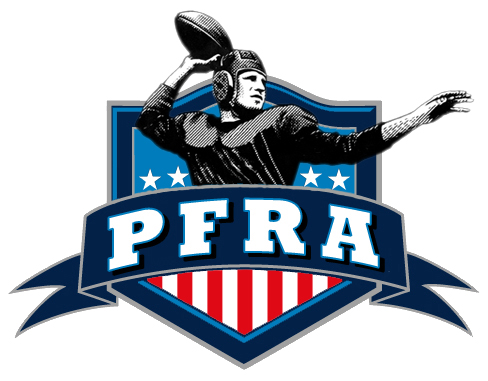The 1965 NFL Season
"The 1965 NFL Season: A Turning Point in Professional Football"
The 1965 National Football League season holds a special place in professional football history. It marked the end of an era, serving as the final season before the NFL's merger with the upstart American Football League (AFL) truly began to take shape. For purists, it was the last taste of "pure football," where the East and West conference champions genuinely claimed the singular NFL title. Darin Hayes of "Pigskin Daily History Dispatch" recently hosted Bob Swick of "Gridiron Greats Magazine" and Podcast to delve into the intricacies of this landmark season, focusing on the dominant Green Bay Packers.
✦ The Packers' Challenging Road to Glory
The Green Bay Packers, a perennial powerhouse under the legendary Vince Lombardi, faced a more challenging path to the championship in 1965 than their previous victorious seasons. Finishing with a record of 10 wins, 3 losses, and one tie, they found themselves in a dead heat with the Baltimore Colts for the Western Conference title. This necessitated a thrilling playoff game in Green Bay the day after Christmas, a contest that went into overtime. The Packers ultimately prevailed thanks to a field goal from Don Chandler, who had taken over kicking duties that season. This victory set the stage for their championship showdown against the Cleveland Browns on January 2, 1966.
Despite their offensive struggles—finishing 12th in the league—the Packers boasted the NFL's third-best defense. Their defensive prowess was truly remarkable, highlighted by 44 sacks (3rd in the league) and an astounding 27 interceptions (1st in the league). This aggressive, turnover-focused defense, featuring Hall of Famers like Herb Adderley, Willie Davis, and Henry Jordan, consistently put pressure on opposing quarterbacks, leading to mistakes and crucial takeaways. While quarterback Bart Starr didn't have his most stellar season, and running back Jim Taylor fell short of his usual 1,000-yard rushing mark, the defense consistently rose to the occasion. Lombardi's ability to maximize his defensive talent proved pivotal, showcasing his strategic genius in adapting to his team's strengths.
✦ The Browns' Quest for a Title and Jim Brown's Farewell
The Cleveland Browns, led by the incomparable Jim Brown, entered the 1965 championship game with an 11-3 record and high hopes. This season was particularly significant as it marked Brown's final year in the NFL; he retired after the season, a decision that shocked the football world. Brown had an incredible farewell season, rushing for 1,544 yards and scoring 17 rushing touchdowns, along with four receiving touchdowns. While quarterback Frank Ryan managed the offense, the Browns' primary weapon was undoubtedly Brown's ability to dismantle defenses.
However, the championship game itself, played in Green Bay on a snow-covered, soon-to-be-muddy field, saw the Packers' defense execute a near-perfect game plan. Lombardi's primary objective was to neutralize Jim Brown, and they succeeded emphatically. Brown was held largely in check, becoming a non-factor in the game.
The Packers dominated the snap count, running 69 plays to Cleveland's 39, reflecting their control of the clock and field position. After leading 13-12 at halftime, the Packers' defense completely shut down the Browns in the second half, allowing no further points. The Browns' only touchdown came on a pass from Frank Ryan to Gary Collins, with Lou Groza adding two field goals. The final score, 23-12, underscored the Packers' defensive dominance and strategic superiority.
✦ The Dawn of a New Era: NFL-AFL Merger
The 1965 season also existed on the cusp of a major transformation in professional football: the impending NFL-AFL merger. While a full merger wouldn't occur until 1970, discussions and player movements between the leagues were already hinting at the inevitable. Many fans and purists cherished the distinct identities of the two leagues, each with its unique style of play. However, the economic pressures and competitive landscape pushed towards consolidation.
The NFL's proactive move to expand, like adding the Atlanta Falcons, was partly a response to the AFL's growing popularity and interest in new markets. Interestingly, Lombardi himself was approached by the Falcons to become their head coach and general manager, but he remained loyal to the Packers (though he later left for Washington for financial security). The eventual merger in 1970 dramatically reshaped the league, creating the American Football Conference (AFC) and National Football Conference (NFC) that exist today. For fans in regions like Erie, Pennsylvania, located between NFL strongholds (Cleveland, Pittsburgh) and an AFL hub (Buffalo), rooting allegiances often came with a sense of league pride, adding another layer to the competitive dynamic of this transitional period.
The 1965 NFL season, with its intense playoff race, a championship clash dictated by defensive mastery, and the looming merger, serves as a fascinating snapshot of American football on the brink of its modern era.
What do you find most interesting about how the NFL operated before the merger?
- HASHTAGS: #BobSwick #January02 #NFLChampions #GreenBayPackers
- AUTHOR: Bob Swick
- EVENTDAY: January 02
- FOOTBALL: NFL Champions
- FOOTBALL TEAM: Green Bay Packers
- PROFOOTBALL: 1965




